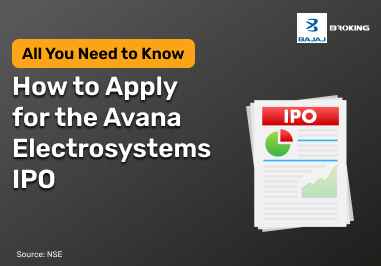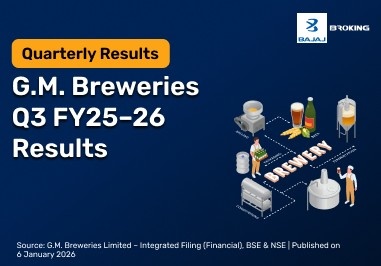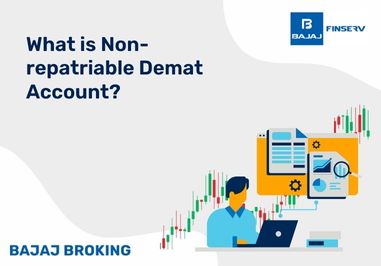When you buy or sell shares through the stock exchange, how you place your order matters. The type of order you choose affects how quickly your trade goes through and at what price. You may have seen options like market order and limit order on your trading platform. These two are common but work very differently.
A market order is fast. It places the trade right away at the available price. A limit order gives you control. You set the price you want and wait for the market to match it.
In this guide, you’ll understand the difference between market order and limit order, how they work, and when to use each one.
What is a Market Order?
A market order tells your broker to buy or sell shares at the current market price, immediately. It focuses on speed, not price. Once you place the order, it gets queued and is executed as soon as possible. You don’t choose the price. You agree to whatever the market offers at that moment.
For example, if a stock shows ₹500, your trade will go through near that price. But in fast-moving markets or with low-volume stocks, you might end up paying slightly more or less. This gap is called slippage, and it’s common with large orders or during volatile periods.
Also, if the market is closed and you place a market order, it gets executed at the opening price the next day. This price may be higher or lower than what you expected. Some brokers offer after-hours trading, but lower volume during this time can affect execution and price.
Market orders are useful when timing matters more than the exact price. But you should always keep market conditions in mind. The final trade price may differ from the one you saw before clicking "place order."
Advantages and Disadvantages of Market Orders
Advantages
Quick Execution: Market orders are processed immediately at the available price. This helps when time matters more than price, especially during fast-moving markets or when reacting to sudden news.
Simple to Use: You don’t need to set a price or track the market constantly. You just enter the number of shares, and the trade gets placed right away.
High Likelihood of Execution: Since you are agreeing to trade at the market price, the chances of your order going through are very high, even during periods of high activity.
Disadvantages
Price Uncertainty: The final trade price may differ from the last quoted price, especially in volatile markets or with low-volume stocks.
Not Ideal for Low Liquidity Stocks: For stocks that don’t trade often, a market order could fill at a price quite different from what you expect.
Slippage Risk for Large Orders: If you’re buying or selling a large quantity, the price may move unfavourably before your full order is completed.
What is a Limit Order?
A limit order gives you control over the price. You decide the price at which you want to buy or sell, and the trade only goes through if the market reaches that price. You can also choose how long the order should stay active.
For example, if a stock is trading at ₹500, but you only want to buy it at ₹480, you place a limit order at ₹480. The trade will only happen if the stock falls to that price. If it doesn’t, your order stays pending or gets cancelled after your selected time period.
Limit Orders are useful when you're trading during uncertain conditions or dealing with stocks that move a lot or don’t trade frequently. They help avoid paying more than you want or selling for less than your goal. But there's no guarantee the trade will happen.
So, while Market Orders prioritise execution, limit orders prioritise price. This trade-off is key in understanding the difference between market order and limit order.
Advantages and Disadvantages of Limit Orders
Advantages
Price Control: You decide the exact price at which you're willing to buy or sell. This helps you avoid paying more or accepting less than you're comfortable with.
Useful in Volatile Markets: When stock prices are moving quickly, a limit order helps you stick to your price and avoid sudden, unwanted changes in trade value.
Helpful for Illiquid Stocks: Thinly traded stocks often have wide price gaps. A limit order can prevent you from trading at unfavourable prices in such cases.
Disadvantages
No Guarantee of Execution: If the market never hits your set price, your order won’t go through. This could mean missing out on a trade altogether.
More Involvement Needed: You need to choose your price, set order duration, and possibly adjust it as market conditions change, which adds complexity.
Delayed Trade Completion: Limit orders may take longer to execute—or remain unfilled—especially during stable or slow market phases where price movement is limited.
Additional Read: What is a Day Order?
Key Differences Between Market and Limit Orders
Feature
| Market Order
| Limit Order
|
Execution Speed
| Immediate, at current market price
| Only when market reaches your set price
|
Price Control
| None
| Full control over price
|
Certainty of Trade
| High (executes unless halted)
| Not guaranteed to execute
|
Order Setup
| Simple: just set quantity
| Requires price input and timing decision
|
Use Case
| When timing is more important
| When price matters more than speed
|
Understanding Market Order vs Limit Order helps you manage your trades better and plan based on market behaviour.
When to Use Market vs Limit Orders
Use a Market Order when -
Your priority is immediate execution: You want the trade to go through quickly, regardless of small changes in price.
The stock is highly liquid: When trading shares with high volume and tight bid-ask spreads, market orders usually execute near the quoted price.
Market conditions are stable: In calm markets, the risk of price slippage is lower, making market orders more predictable.
Use a Limit Order when -
Price matters more than timing: You want to buy or sell only at a specific price, even if it means waiting.
The stock is volatile or illiquid: Limit orders help protect you from unexpected price swings or large spreads in low-volume stocks.
You want to avoid overpaying or underselling: By setting your price, you control the trade and reduce the risk of slippage.
Understanding the situation helps you choose the right order type on the stock exchange.
Conclusion
Choosing between a Market Order and a Limit Order depends on what you prioritise—speed or price. If you need a trade to execute quickly, a market order may suit you better. However, if you're aiming for a specific price and can wait, a limit order may be a better option. Understanding the difference between Market Order and Limit Order helps you make clearer decisions while trading shares on the stock exchange.
Disclaimer: Investment in securities market are subject to market risks. Read all the related documents carefully before investing. This blog is for educational purposes only and does not constitute investment advice.














